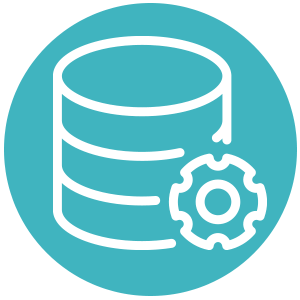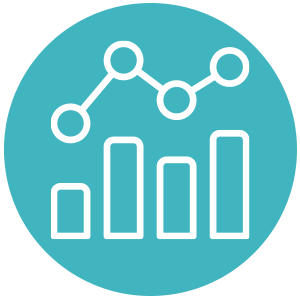Analytics Blog

Top 7 Digital Analytics Industry Trends for 2020
Annually, we like to take a moment to think about the top trends for the digital analytics industry as we head into the new year. The year is now 2020, and it still sounds odd saying that out loud. It sounds like the future, and I’m wondering why we don’t all have flying cars!
You can reference the digital analytics trends I compiled for 2019, and you’ll find that there was certainly progress across all eight of them. I think it is simple to say that these trends will continue, but I’d like to take an opportunity to dive deeper into what’s on my mind for 2020. Some of these will certainly be repetitive from my 2019 trends blog post, but perhaps with a slightly different take on them or with an updated perspective.

Trend #1: Privacy Laws
Consumers want their data to be respected, clarity on how it’s used, and have the right to be forgotten. While the kickstart to this conversation for the digital analytics industry was certainly General Data Protection Regulation (GDPR), we saw this picking up even more steam as 2019 came to a close with the California Consumer Privacy Act (CCPA) law going into effect on January 1, 2020. This trend towards an increase in consumer expectations around their privacy is going to continue into 2020 as a top focus. Brands must figure out how to build trust with consumers to ensure that consumers feel respected.
Enforcement of the CCPA begins by July 2020, and I predict we’ll start to see action taken against the most egregious offenders of the law. This will help set the tone for the seriousness of privacy laws, as the fines can be substantial and repairing trust with consumers is a significant uphill battle.
As we enter the new year, there’s confusion and fear across organizations. There’s ambiguity on how the CCPA law is written, and there are potential amendments that may change how businesses are adhering (or not adhering) to the law. You can talk to two different legal teams and get different interpretations of the more granular details of the law, namely based on how they perceive the risk.
As time progresses, fines and lawsuits are levied, and GDPR continues to mature, my hope is that confusion and fear will decrease. If your organization is respecting the user and you have taken data governance and privacy seriously, then you’ll capitalize on the competitive advantage you have.


Trend #2: Browser Privacy Technologies
2019 saw browsers (namely Safari and Firefox) take significant action to strengthen their products to best cater to an audience of consumers that place value on privacy. Safari is now on ITP 2.3 (as well as some recent additions as of December 10), and it’s clear that we’re on a path of continuous change where there’ll continue to be real impacts on digital analytics, personalization, and marketing technologies. Safari’s market share (certainly mobile) means that we must keep up to date on changes and respond accordingly to ensure that we’re staying within the intents of ITP while keeping our data.
Beyond Safari, the other browser vendor that is making significant privacy moves is Firefox. The impacts of Firefox’s Enhanced Tracking Protection cannot be ignored. The Enhanced Tracking Protection is on by default for Firefox and blocks virtually all pure social media and advertising trackers. For now, digital analytics trackers such as Google Analytics and Adobe Analytics are not as impacted (though the remarketing features of GA are definitely blocked)
While the Safari and Firefox changes were most visible in 2019, I predict that 2020 will include more of the same. Google Chrome is releasing their same-site cookie change in Chrome v80 in February and, while not as impactful from a pure digital analytics perspective, it’s a step towards treating cookies more seriously than in the past.
In 2020, browsers will continue to evolve in the way they help users with their privacy as they use the internet. As a brand, you’ll need to stay on top of these changes. You may need to make changes to how you implement digital analytics or optimization technologies. For example, when using Adobe Analytics, you’ll want to implement a CNAME first-party tracking subdomain so that the cookie can be set by the server-response and as a first-party cookie. For Google Analytics, Optimizely, and others, you’ll want to consider implementing technologies that can set the unique cookie ID that these technologies rely on, from the server-side.
The quality of the data as it relates to marketing attribution will decrease, as blocking and unique identifier deletion occurs by default and directly at the browser-level. For many marketing and advertising technologies, you’ll be subjected to Safari’s 1-day or 7-day cookie logic or Firefox’s complete blocking of the cookie. As a result, it’ll be difficult to have an accurate picture on marketing attribution.

Trend #3: Shift to Event-Based Digital Analytics
Google has announced that they’re shifting to their new Google Analytics App + Web unification platform. This shift will take time, and we’ll likely be in 2021 before we see significant adoption. Adobe has built out their Adobe Experience Platform with some exciting changes to come, including hints of no longer having to send custom eVars and sProps. Both vendors have exciting platform changes that will:
- Simplify how data is sent (i.e. implementation)
- Improve how you’re able to query and build reports around the data
- Make it easier to bring digital analytics together with other data sets
While all of the details are not released about how Adobe Analytics itself evolves, we can make some assumptions and also draw parallels with Google’s plans to see that event-based tracking is the future.
The first time I heard about an event-based data model was in 2016 by Snowplow Analytics. While this may differ a bit with how Google and/or Adobe roll out their platform changes, I think it’s an important shift to increase the utility around the data we collect. Current platforms are too restrictive with how the data can be queried, and it often goes back to the limits of the underlying data model architecture.
An impact of the data model architectural changes (specifically referring to Google’s App+Web changes), is the idea of the ‘Session’ and our current obsession with it changes. While there’ll still be the concept of a ‘Session,’ you must shift your mindset into thinking about the full user journey, rather than what they did during a 10-minute browsing session. This is one of the reasons why Google is focusing on combining the App+Web data into the same reporting interface. Cross-device and cross-platform analytics is ever-more important to fully understand the user journey.
Also strongly positioned with these platform changes is the concept of data streams that can be combined with more traditional web/app analytics data to enhance organization-wide insights and actions.

Trend #4: Real-Time Personalization
Personalization is an effective method to deliver the right content at the right time to the right users. You’ll continue to see an increase in personalization effectiveness by looking at the entire user journey (omni-channel) and by more fully leveraging first-party data that you already have on your users.
One example use case of more fully leveraging your first-party data is to build out a Customer Lifetime Value (CLV) model and apply it to real-time personalization efforts to recognize and reward your best customers by adapting the experience for these customers.
Personalization is no longer just about simple on-site behavioral logic (still important), but it’s about leveraging everything that you know about your customer so the experience is optimized and tailored in a way that benefits the customer.


Trend #5: Continued Rise of the Customer Data Platform (CDP)
I had CDP on my 2019 digital analytics trends list, and I see this continuing at a quicker pace in 2020. The Customer Data Platform (CDP) becomes a mission-critical platform that all organizations will want to leverage. The CDP is like the connective-tissue within an organization, bringing multiple departments together for commonly-defined goals. The centralized platform has the ability to ingest large amounts of data and become the processing, intelligence, and rule engine across the data of an organization.
Perhaps the surprising source pushing this forward are privacy laws, such as GDPR and CCPA. Under many privacy regulations, there’s an obligation of an organization to know where data is collected so that it can be compiled for access requests and honored for data deletion requests. Further, it becomes the one-stop shop for honoring opt-out requests. Without a CDP, you’re operating in a disjointed environment that likely lacks the sophistication for today’s privacy regulations.
Organizations that have relied on third-party datasets (Data Management Platforms, etc) will begin to realize that, in today’s privacy landscape, the quality and risks related to third-party data will elevate first-party data to a new level of importance for activation campaigns.

Trend #6: Server-Side Tracking
Server-side tracking was on my list of digital analytics trends for 2019, and while I saw some of this, it wasn’t as significant as I anticipated. I cautiously think that 2020 will see an increase in server-side tracking for the following reasons:
- Security – IT and security teams are starting to really question having third-party hosted javascript loading on a website. It opens the door to significant hacks where code is taken over and used for malicious purposes.
- Performance – By eliminating client-side javascript and requests, page and app performance is noticeably increased.
- Data Privacy – Directly related to browser-side privacy changes (Safari ITP, Firefox Enhanced Tracking Protection, etc) as well as global privacy regulations, there are both technical reasons for a push towards server-side (less reliance on cookies) and practical reasons for better controlling the data privacy pipeline.
Server-side tracking can be much more difficult to implement and perform quality assurance against, but the points above need to be taken seriously.

Trend #7: Digital Analytics Matures
In 2020, we’ll see a continued evolution of digital analytics data not existing in its own silos. What I mean by this is that it becomes cross-functional as data across the organization is linked up with digital analytics data. You’ve seen this with the relatively simple, but impactful, Google Analytics 360 + Salesforce integration, and it’ll continue.
As data ownership through clickstream data continues and the importance of how digital analytics data is used in combination with other data both collide, the result is a clear need for skillsets around advanced data analysis, data manipulation, and extract, transform, load (ETL); data science and data modeling; data management, data visualization, and data storytelling. That’s a lot, but it’s already happening. Google Analytics and Adobe Analytics will have to keep up and position themselves as the ecosystems from which to perform this analysis. From Google Cloud Platform’s BigQuery to the Adobe Experience Cloud, we’re seeing this trend take off like a rocket.
Plan for the Future
The digital analytics industry is constantly changing and expanding. You can increase your competitive advantage by being ahead of the curve and planning for what’s coming. This blog post represents the collective thoughts of many on our team. I’d love to know what digital analytics trends you are seeing, as well as any questions you have on the trends I’ve shared.
From the Blast team to yours, we’re wishing you a very successful year ahead!








